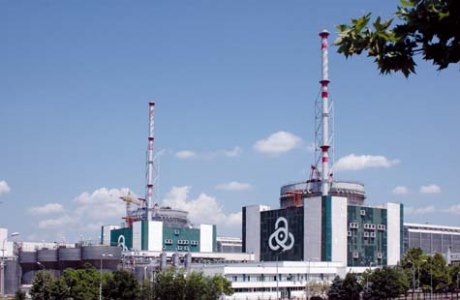Bulgarian Energy Holding (BEH) is to enter exclusive talks with Westinghouse and Toshiba towards the construction of an AP1000 as the seventh unit at the Kozloduy nuclear power plant.
 |
| Kozloduy's VVER units: set to be joined by an AP1000 (Image: Kozloduy NPP) |
The decision brings to an end any lingering uncertainty over the reactor of choice for the project. The site is already home to two operating Russian-designed VVER-1000 pressurised water reactors, Kozloduy 5 and 6, as well as four shut-down VVER-440s.
Westinghouse and Toshiba will now work "collaboratively and actively" with BEH over the coming months on the details of a potential project. Westinghouse president and CEO Danny Roderick said that the selection of the AP1000 reactor would give Bulgaria "a maximum degree of certainty with respect to investment, licensing to European and global standards, with accelerated and modern construction." The eight AP1000 units currently under construction in China and the USA will act as substantial references for Kozoloduy 7, the company notes.
The possibility of building two further units at Kozloduy has been under consideration since the 1980s, and more actively since 2010. In 2012, Bulgaria's Council of Ministers approved in principle the construction of new capacity at the site, prompting a request for proposals and subsequent feasibility studies of either a VVER or AP1000.
Prior to 2002, Bulgaria was a major regional exporter of electricity thanks in large part to the output of the six Kozloduy reactors, but was forced to close units 1-4 as a condition of its accession to the European Union. In 2006, Bulgaria's National Electricity Company (NEK) signed a contract with Rosatom to build two new VVER-1000 reactors at Belene. However, after problems securing finance - German strategic investor RWE withdrew in 2009 - the Bulgarian government decided in March 2012 not to go ahead with the project. A set of VVER hardware that had already been manufactured for Belene was instead considered for possible construction as Kozloduy 7.
Researched and written
by World Nuclear News




_18570.jpg)
_18938.jpg)
_33584.jpg)
_82983.jpg)





